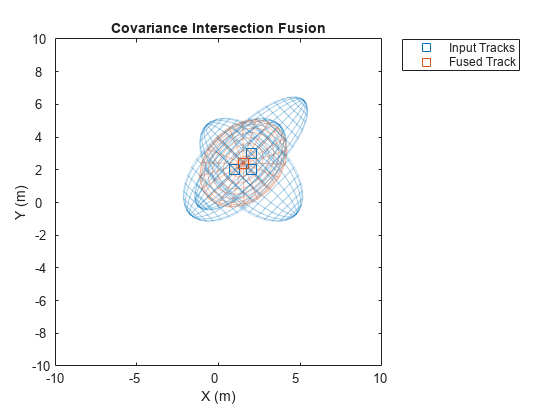fusecovint
Covariance fusion using covariance intersection
Syntax
Description
[
fuses the track states in fusedState,fusedCov] = fusecovint(trackState,trackCov)trackState and their corresponding covariance
matrices trackCov. The function computes the fused state and covariance
as an intersection of the individual covariances. It creates a convex combination of the
covariances and finds weights that minimize the determinant of the fused covariance
matrix.
[
estimates the fused covariance by minimizing fusedState,fusedCov] = fusecovint(trackState,trackCov,minProp)minProp, which can be
either the determinant or the trace of the fused covariance matrix.
Examples
Input Arguments
Output Arguments
References
[1] Matzka, Stephan, and Richard Altendorfer. "A comparison of track-to-track fusion algorithms for automotive sensor fusion." In Multisensor Fusion and Integration for Intelligent Systems, pp. 69-81. Springer, Berlin, Heidelberg, 2009.
[2] Julier, Simon, and Jeffrey K. Uhlmann. "General decentralized data fusion with covariance intersection." In Handbook of multisensor data fusion, pp. 339-364. CRC Press, 2017.
Extended Capabilities
Version History
Introduced in R2018b

